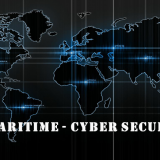In the last two decades, the cases of cyberattacks against Institutions have increased exponentially, so much so that they pose a real threat to the defense of the state and organizations.
As the global shipping and commerce industry becomes increasingly dependent on highly sophisticated technical equipment and software to keep it running efficiently, it also becomes more vulnerable to the risks that cyberattacks pose – herein lie the importance of maritime cyber security
SEAFUTURE is the convention on maritime and dual-use technologies, designed to provide civil or military Institutions and Organizations with the progress of science in the maritime industry and defense, also and above all about the theme of maritime cyber security.
From 29 September to 1 October 2021 Telsy will participate in the SEAFUTURE 2021 convention, at the naval arsenal of La Spezia, during which the major national and international defense and security players engaged in the maritime field will be present.
THE CYBER THREAT
Some of the major factors that make maritime cybersecurity such a topical topic are the proliferation of automated systems onboard ships, the integration of multiple systems, the growing ability to monitor systems remotely, and the fact that all of these systems rely on the Internet for their connectivity.
Ships and ports can be damaged by malware, system failures, and other harmful computer activities. That’s why maritime cybersecurity must be able to better protect and inform sea workers who rely on technology to assist them in everything from vessel navigation and control to cargo and shore management issues.
The Internet of Things (IoT) can make a home smart and more efficient, but at the same time make it vulnerable to hackers looking to disable its security system and steal the personal data of its occupants.
Ships that rely on advanced technologies can be equally vulnerable. For this reason, maritime cyber security is as much about the adoption of new technologies as it’s about the awareness of the susceptibilities that derive from that technology.
For further information, an article on the risks deriving from cyber threats is available on our blog.
MARITIME CYBER RISK
Maritime cyber risk aims to quantify how much a technological asset may be threatened by a potential circumstance or event, which could lead to operational, security, or compromise-related failures of information or systems. From these assumptions arises the need for effective maritime cyber risk management.
Cyber risk management refers to the process of identifying, analyzing, evaluating, and communicating an IT risk and accepting, preventing, transferring, or mitigating it at an acceptable level, considering the costs and benefits of the actions taken by the stakeholders.
In this sense, cybersecurity represents a conditio sine equa non to affirm substantial success for the marine industry.
THE MARITIME EMPOWERMENT
Italy – and the enlarged Mediterranean in general – is an essential crossroad for world trade and shipping. Located in the center of the Mediterranean basin and “closed” by the two most strategic “choke points” of the old continent (the Strait of Gibraltar and the Suez Canal), it has the potential to be the protagonist of the international maritime transformation.
With the growing need for greater quantities of traded goods and the newly formed Italian EEZ (Exclusive Economic Zone), the entire private and institutional maritime organization is in an epochal modernization and development process about its capabilities.
Among these, cyber security is an indispensable element for virtuous and far-sighted development.
TELSY AT SEAFUTURE 2021
During the SEAFUTURE 2021 convention, the hot topics in the fight against cybercrime and, in particular, maritime cyber security will be exposed. The event will be attended by the major exponents in the field of industry and maritime defense, both in the civil and military sides.
Competence Center of the TIM Group in the cyber and crypto sector, Telsy provides innovative security technologies to support strategic assets and critical infrastructures in the fight against maritime cybercrime.
On September 30 Telsy, in addition to exhibiting its technologies, will be the official sponsor of the main event dedicated to cybersecurity, during which Eugenio Santagata, CEO of the company, will speak.
Source: telsy



